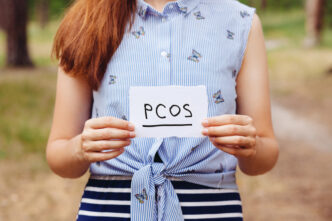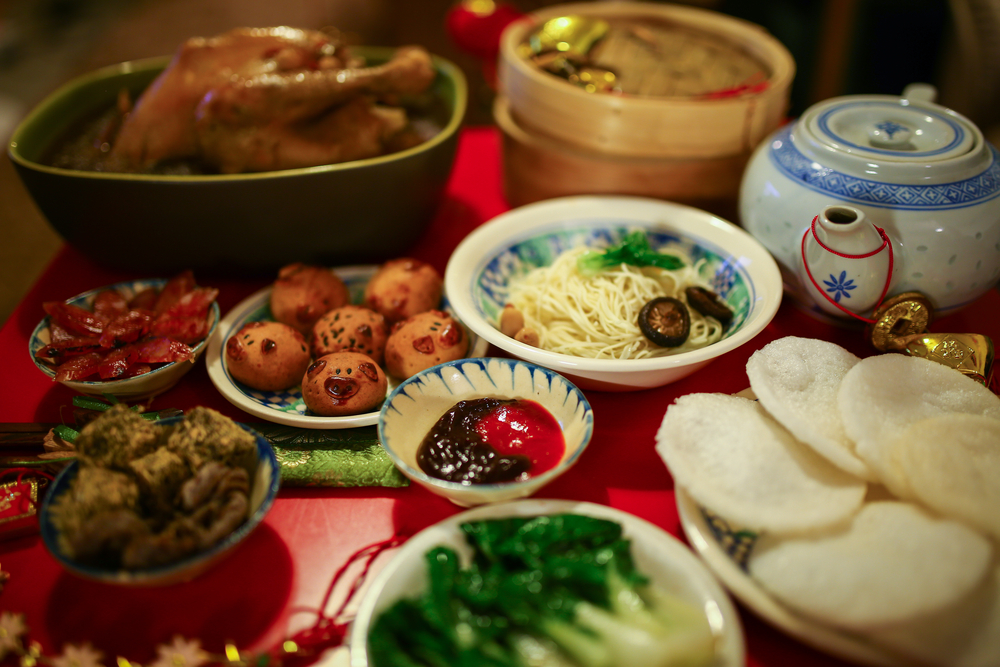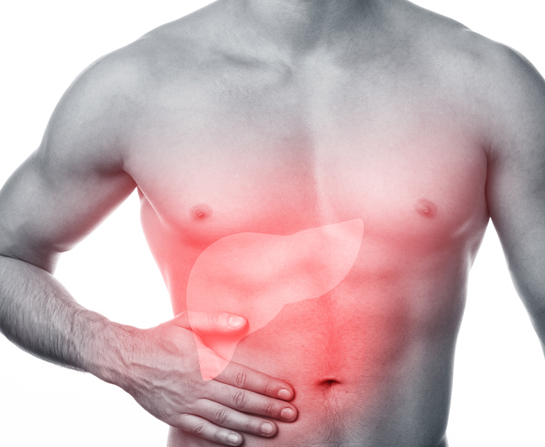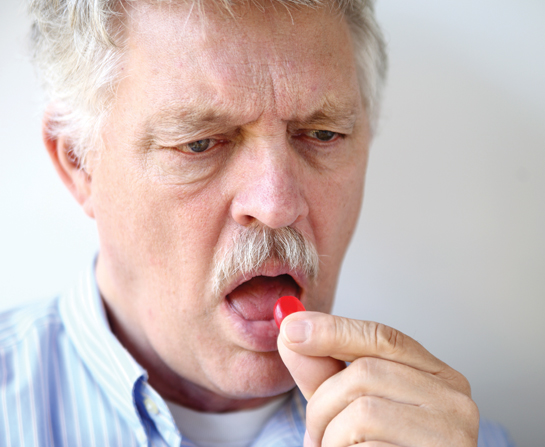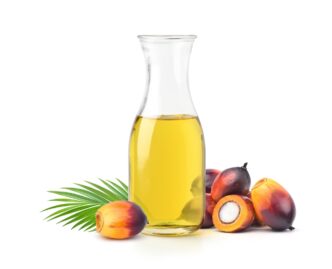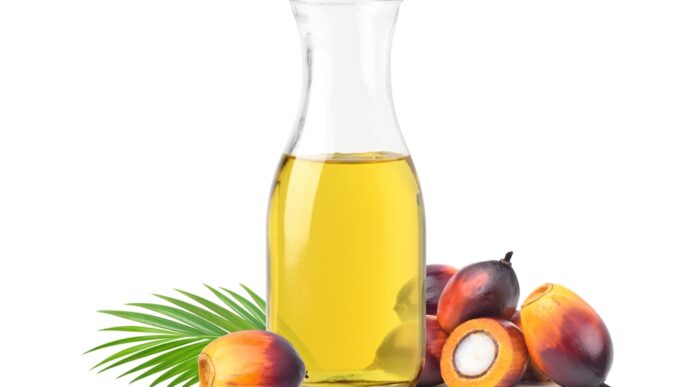Polycystic ovary syndrome (PCOS) affects up to 1 in 10 women in Malaysia and is linked to obesity, insulin resistance, and fertility issues. With obesity rates rising, dietary and lifestyle changes are key to managing PCOS and improving hormonal and reproductive health.
WORDS KUNG TZE XUAN AND NUR ATIQA ALI
 FEATURED EXPERT FEATURED EXPERTKUNG TZE XUAN Final-Year BSc (Hons) Dietetics with Nutrition Student School of Health Sciences IMU University |
 FEATURED EXPERT FEATURED EXPERTNUR ATIQA ALI Clinical Instructor Division of Dietetics, Nutrition and Food Science School of Health Sciences IMU University |
A CLOSER LOOK AT PCOS
Polycystic ovary syndrome (PCOS) is a common hormonal disorder affecting up to 1 in 10 women in Malaysia.

It often shows up as irregular periods, acne, difficulties in conceiving, or stubborn weight gain.
While the exact cause remains unknown, PCOS is closely linked to two key culprits, both of which are strongly associated with obesity and insulin resistance:
- Excess male hormones
- High insulin levels
Obesity Makes Things Worse
- It disrupts hormonal balance even further.
- It fuels insulin resistance.
- It makes PCOS symptoms harder to manage.
The good news is that diet can make a big difference — not just for weight loss, but for restoring hormonal balance and improving fertility.
OVERCOMING MALAYSIAN DIETARY CHALLENGES
Malaysia’s food scene is vibrant, diverse, and delicious, but it’s not always PCOS-friendly!
From rich coconut milk-based curries to sugary drinks and deep-fried street snacks, many local favourites are high in calories, fat, and sugar.
Add modern food trends like cheese-loaded fast food, bubble tea, and all-you-can-eat hotpot, and the average diet becomes a perfect storm for weight gain and hormonal chaos.
That said, not all traditional foods are the enemy.
The key lies in balance, smarter choices, and cultural adaptation.
Even modest weight loss (5% to 10% of your current body weight) can:
|
3 DIETITIAN-APPROVED WAYS TO MANAGE YOUR DIET AND HENCE YOUR PCOS AND/OR OBESITY
#1 Control Your Calories, Not Your Culture
Eating fewer calories doesn’t mean starving yourself — it means eating smarter.
- Use the ‘Quarter, Quarter, Half’ method to plan balanced meals.
- Load half your plate with vegetables and fruits of a variety of colours
- Load a quarter of your plate with protein sources (meat, poultry, etc)
- Load the remaining quarter with rice or other carb sources
- Downsize your plate to avoid overeating.
- Choose healthier cooking methods like steaming, baking, grilling or braising. Swap fried chicken for ikan bakar or steamed tofu.
- Rethink your drinks: try teh tarik tanpa susu pekat, tea-O without sugar, or plain water.
#2 Switch to Low-GI Carbs
Not all carbs are the enemy — but quality matters.
Low glycemic index (GI) foods are digested slowly, helping to keep your blood sugar and insulin levels stable — both critical for PCOS management.
- Choose: brown rice, oats, legumes, leafy greens
- Local-friendly options: nasi kerabu, ulam, paired with protein-rich foods like tempeh, ikan bakar, or boiled eggs
#3 Go Mediterranean (the local way)
The Mediterranean diet has proven benefits for PCOS, especially its anti-inflammatory effects and metabolic benefits.
Adapt it for Malaysian tastes:
- Use healthy oils like olive oil for cooking or salads
- Eat more grilled fish like sardines and mackerel
- Snack on a handful of almonds or walnuts
- Include colourful tropical fruits like papaya, guava, and starfruit
This diet helps reduce insulin resistance, improve cholesterol, and support long-term health.
THE BOTTOM LINE
PCOS and obesity can feel overwhelming, but simple dietary changes make a real difference.
A personalized, culturally respectful nutrition plan, paired with professional support, can help you take back control of your hormones, your fertility, and your health.
Start with your next meal.
| Do you know that the IMU Student Dietetics and Wellness Clinic in IMU University offers free individualized meal planning services as well as a few other nutrition-related services? Check out our article on this clinic and how you can avail yourself to their free services. |
| This article is part of our series on foods and how consuming these foods can affect various aspects of our health. |
References:
- Meng, Y., Zhao, T., Zhang, R., Zhu, X., Ma, C., & Shi, Q. (2025). Global burden of polycystic ovary syndrome among women of childbearing age, 1990-2021: a systematic analysis using the global burden of disease study 2021. Frontiers in public health, 13, 1514250. https://doi.org/10.3389/fpubh.2025.1514250
- Jiang B. (2025). The global burden of polycystic ovary syndrome in women of reproductive age: Findings from the GBD 2019 Study. International journal of women’s health, 17, 153–165. https://doi.org/10.2147/IJWH.S490836
- Goh, J. E., Farrukh, M. J., Keshavarzi, F., Yap, C. S., Saleem, Z., Salman, M., Ramatillah, D. L., Goh, K. W., & Ming, L. C. (2022). Assessment of prevalence, knowledge of polycystic ovary syndrome and health-related practices among women in Klang valley: A cross-sectional survey. Frontiers in endocrinology, 13, 985588. https://doi.org/10.3389/fendo.2022.985588
- Dashti, S. , Abdul Latiff, L. , Abdul Hamid, H. , Mohamad Saini, S. , Shah Abu Bakar, A. , Binti Sabri, N. A. I. , Ismail, M. and Jafarzadeh Esfehani, A. (2019). Prevalence of polycystic ovary syndrome among Malaysian female university staff. Journal of midwifery and reproductive health, 7(1), 1567-1575. https://doi.org/10.22038/jmrh.2018.30370.1329
- Husin, H., Mohd Yussof, M. A., Hamid, A., Ishak, I., & Budin, S. B. (2023). Relationship between obesity and infertility among women with polycystic ovarian syndrome treated at the National Population and Family Development Board (NPFDB) Malaysia. Sains Malaysiana, 52(12), 3475–3484. https://doi.org/10.17576/jsm-2023-5212-10
- Institute for Public Health, National Institutes of Health, Ministry of Health
Malaysia. (2024). National Health and Morbidity Survey (NHMS) 2023: Non-communicable diseases and healthcare demand – Key findings. https://iku.nih.gov.my/images/nhms2023/key-findings-nhms-2023.pdf - Moran, L. J., Ko, H., Misso, M., Marsh, K., Noakes, M., Talbot, M., Frearson, M., Thondan, M., Stepto, N., & Teede, H. J. (2013). Dietary composition in the treatment of polycystic ovary syndrome: a systematic review to inform evidence-based guidelines. Journal of the Academy of Nutrition and Dietetics, 113(4), 520–545. https://doi.org/10.1016/j.jand.2012.11.018
- Ros E. (2010). Health benefits of nut consumption. Nutrients, 2(7), 652–682. https://doi.org/10.3390/nu2070652
- Barrea, L., Frias-Toral, E., Verde, L., Ceriani, F., Cucalón, G., Garcia-Velasquez, E., Moretti, D., Savastano, S., Colao, A., & Muscogiuri, G. (2021). PCOS and nutritional approaches: Differences between lean and obese phenotype. Metabolism open, 12, 100123. https://doi.org/10.1016/j.metop.2021.100123

